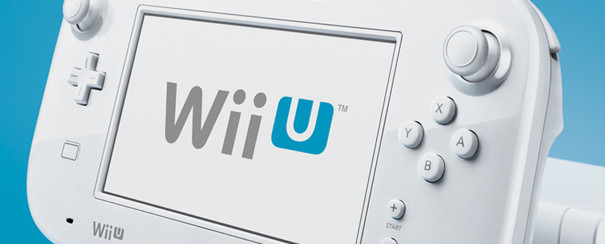

Superheroes battle monsters and space invaders in fast action games. Players take on the role of these superheroes in epic battles. In other games players race cars, boats, motorcycles, helicopters and planes against villains and even less evil opponents to win high stakes races.
Game titles such as Burnout3: Takedown, ESPN, NHL – 2K5, Silent Hill 4: The Room, Terminator 3: The Redemption, Donkey Kong 3, and, Pokemon have joined the national lexicon as kids have flocked to the lure of electronic games.
Parents, teachers, preachers and politicians, have criticized and in some cases even banned electronic games. Electronic games have been blamed for poor grades, poor conduct and even poor health. If you listen long enough, electronic games are responsible for all of the problems our young people experience today.
One thing is certain. Kids love them. They buy and play them in ever increasing numbers. Electronic games are here to stay.
People have been trying to play games on computers almost since the days of the very first computer. As early as 1950, Claude Shannon, a mathematician and engineer, believed that computers could be programmed to play chess in competition with humans. He became intrigued with the concept of artificial intelligence. In pursuit of this idea researchers and scientists designed crude games that could be played on the huge and clumsy computers of the 1950s and 1960s.
The first actual electronic games as a consumer product were built as coin operated arcade games in the early 1970s. In 1971 Nolan Bushnell, Ted Dabney and Al Alcorn formed the first game company, Atari. Soon after they produced the first game console and their first electronic game, Pong, as an arcade game. Pong was immediately successful.
This success led Atari and other firms to begin work on home game consoles that could be hooked to TV sets. Atari released its first home console in 1977. Soon games were put on cartridges that could be changed at the whim of the player.
By 1979, the company, Activision, was formed by former Atari game designers. The purpose of this new company was to focus strictly on game software. They decided to leave the development of equipment to play electronic games to other people. This was the first company to build a business of developing and selling electronic games software.
In a short time a spate of game companies sprang up trying to develop software for the infant electronic game industry. The result was a glut of poorly conceived games hitting the market. Consumers turned away in droves and the home electronic game industry faded hit the skids.
By the early 1980s, electronic games were being developed for personal computers. Color graphics, flexible storage capacity and general purpose processors made games much easier to play on personal computers. The game console business was all but dead.
In the late 1980s, two Japanese companies introduced a new generation of game consoles that were technologically capable of handling the new electronic games being produced. These companies were Nintendo and Sega. These game consoles had graphics capabilities that exceeded those of most personal computers. Nintendo also offered a feature that let the console record the game action so a player could pause the action of a game.
Right behind Nintendo came Gameboy, a hand-held game console. Game consoles enjoyed a resurgence of popularity during the 1990s. A new, even more sophisticated generation of electronic games was introduced by 2001. These consoles included Playstation2 and Xbox. Electronic games continued to become more complex with more action and more graphics.
Electronic games, today, have achieved art form status. They are sort of a wonderful combination of board games and comic books all rolled up into one medium with spectacular graphics and compelling audio. Curiously enough, most electronic games are similar to board games. They have one of two central themes. The first is racing and the other is capturing area or opponents. Perhaps it is because of these similarities that electronic games have begun to capture a wider audience.
As electronic games have matured they have begun to attract more mature audiences. Initially these games were primarily toys for boys. The growth area in the game industry is no longer adolescent males. It is mature adults, both men and women. Many of the most popular board games have been adapted to electronic game formats. Where youngsters hooked game consoles to TV sets, adults are playing games on their PCs, often against other players across the Internet. Grandparents are playing electronic games with grandchildren. They are also joining game clubs to play electronic games on the Internet with other senior citizens in another state or half a world away. Many of the top game companies are betting that older adults are the new growth market for the game industry.
Claude Shannon believed that computers could be programmed to play chess. In a sense he was right. He certainly never imagined chess players reaching across cyberspace as they exercise chess strategies on computerized game boards. Nor could he have imagined video poker, Internet casinos and all of the other popular electronic games people of all ages are playing. Electronic games aren’t just for kids anymore.
About the author: Royce Armstrong is a successful freelance writer with a business and banking background who believes consumers should get the best value for their money when shopping for toys such as electronic games, playstation 2, and game boy.




 Assassins Creed Rogue – Weapons Guide
Assassins Creed Rogue – Weapons Guide Witcher 3 Hearts Of Stone Side Quest Guide
Witcher 3 Hearts Of Stone Side Quest Guide The Best Minecraft Seeds
The Best Minecraft Seeds Metal Gear Solid 5: The Phantom Pain – how to make GMP quickly
Metal Gear Solid 5: The Phantom Pain – how to make GMP quickly DOTA Hero Tips: Puck the Faerie Dragon
DOTA Hero Tips: Puck the Faerie Dragon